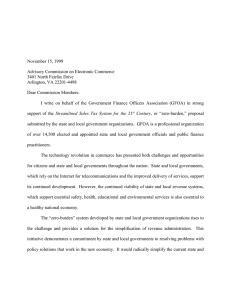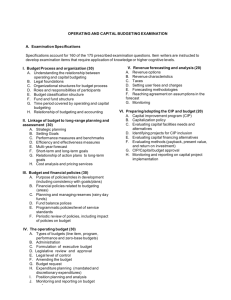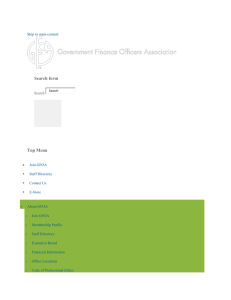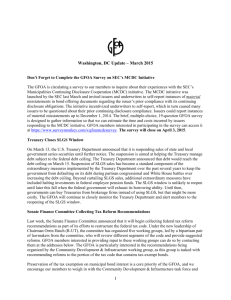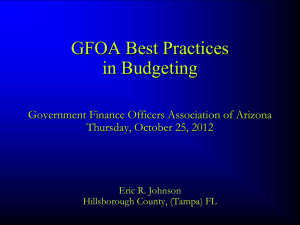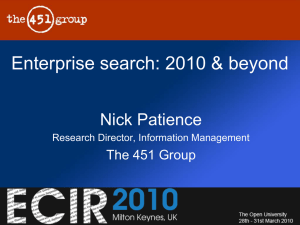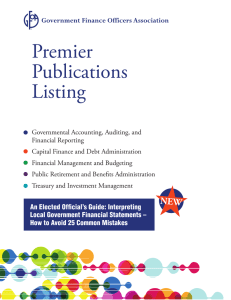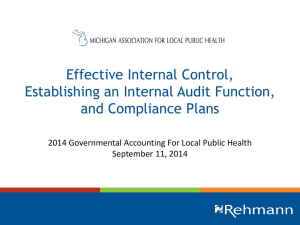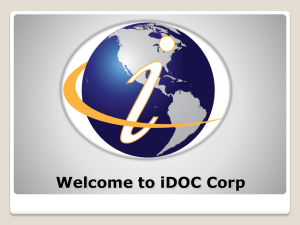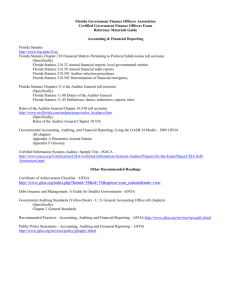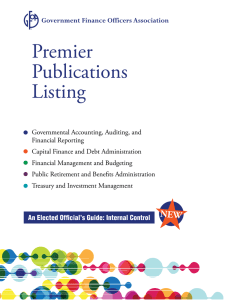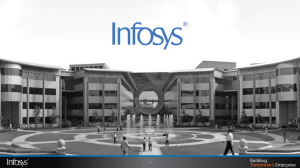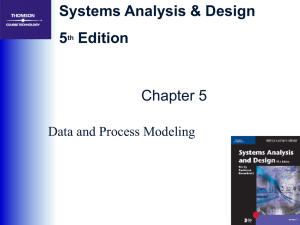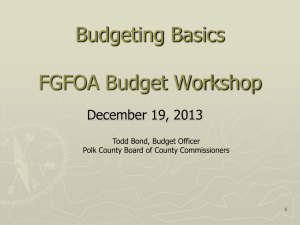ppt - GFOAz
advertisement
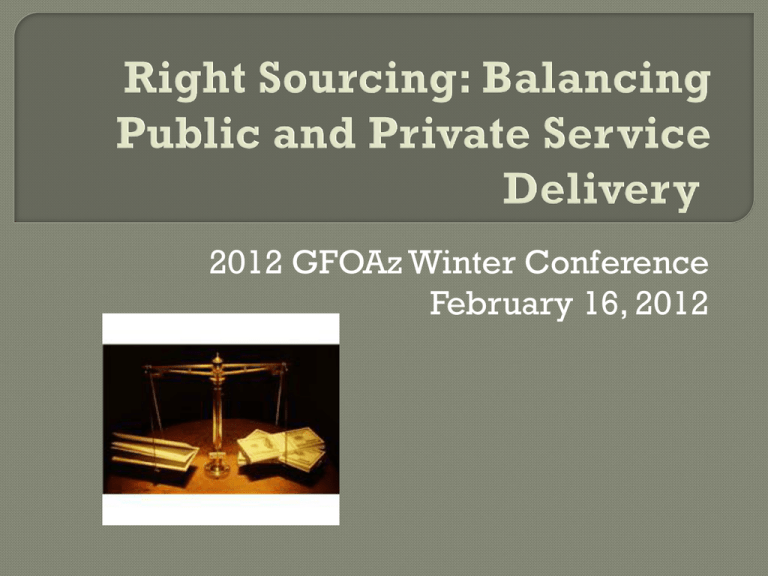
2012 GFOAz Winter Conference February 16, 2012 What is it? What services can be ‘right-sourced’ Pros and Cons When do you use it? How do you do it? Summary One tool in the financial management toolbox: A combination of providing services through outsourcing, multi-sourcing, shared services, in-house staffing, and elimination to achieve the best balance of cost savings and customer service All services performed with inhouse staff Elimination of services Right sourcing Accounts Payable Accounts Receivable Engineering Custodial/Janitorial Police Park Maintenance Water Operations Refuse Disposal IT Payroll Permitting Animal Control Fire Recreation Sewer Operations Transit These are just a few The list is endless Any combination of service delivery that works for your organization and your community Choosing to eliminate a service is always an option Outsourcing – contracting with an unrelated entity to provide a service Multi-Sourcing – contracting with multiple vendors to provide different elements of a service Shared services – aggregating service delivery across different organizational units In-House – services provided only by employees of the organization Lower labor cost because of increased economics of scale Tapping in to a knowledge base for better innovation Frees management time, allowing more focus on core competencies while not being as concerned about outsourced routine activities Increases speed and the quality of delivery of outsourced activities Reduces cash outflow and optimizes resource utilization Possible loss of control over a business process Problems related to quality and turnaround time Sluggish response times coupled with slow issue resolutions Shortcomings in performance vs. expectations Lower than expected realization of benefits and results An irate customer base Lower risk by having multiple contracts Economies of scale Targeted expertise - Selecting different vendors for different components of the service Usually applied for IT services More management resources needed to oversee multiple vendors and monitor compliance Blame Large game - finger pointing vendors may be unable to provide innovation or your ‘niche’ solution Economies of scale Tapping into a knowledge base for better innovation Reduced capital investment Turf wars – clear lines of responsibility need to be identified Loss of control Possible Lower delay in service delivery than expected realization of benefits and results Control Faster over business processes issue resolution Greater influence over quality and response times Increased labor costs Management time used to monitor routine tasks Possible lack of innovation – ‘We’ve always done it this way’ Whenever you need to do a faster cheaper better more efficient job than what you are doing now! *****ALL THE TIME***** Evaluate Plan Implement Measure and Report Feedback Evaluate and Adjust Organization’s Departmental What Fiscal Strategic Plan Operational Plans matters to citizens Constraints Everything is on the table Feasibility Study – • Cost/Benefit Analysis – including intangibles • Risks • ROI • Barriers • Cause and Effect Maps Choose the best alternative for service delivery Decide on : • Liability issues • Governance structure • Time periods • Service levels • Dispute Resolution • Performance metrics • Termination clauses Develop timeline for implementation Negotiate performance agreements to include measures and timelines Transition Monitor from current to new performance What gets measured gets done Report on progress and compliance Communicate results to all stakeholders, including the public Surveys Focus groups Town Hall Interviews Customer comment cards Council Other departments Evaluate Modify based on feedback service delivery if necessary – Keep what is working and change what is not Outsourcing Multi-Sourcing Shared Services In-House Any service – nothing is off the table Evaluate, plan and implement Measure, report, get Evaluate and adjust feedback Questions? A Performance Management Framework for State and Local Government: From Measurement and Reporting to Management and Improving, National Performance Management Advisory Commission, 2010 “Budgeting for Outcomes: Delivering Results Citizens Value at a Price They Are Willing to Pay” by David Osborne and Peter Hutchinson, Government Finance Review, GFOA, October 2004 Public Participation in Planning, Budgeting and Performance Management, GFOA Best Practice, 2009 Alternative Service Delivery: Shared Services, GFOA Best Practice, 2007 Managed Competition as a Service Delivery Option, GFOA Best Practice, 2006 Performance Management: Using Performance Measurement for Decision Making, GFOA Best Practice, 2002 and 2007 Building a Financially Resilient Government Through Long-Term Financial Planning, Shayne Kavanagh, GFOA White Paper, 2011 “Opinion: It's all about 'right-sourcing‘”, Simon Briskman, Silicon.com, October, 2005 “RightSourcing – Buzzword or Reality Settling In?”, Nari Kannan, Toolbox.com, April, 2004
